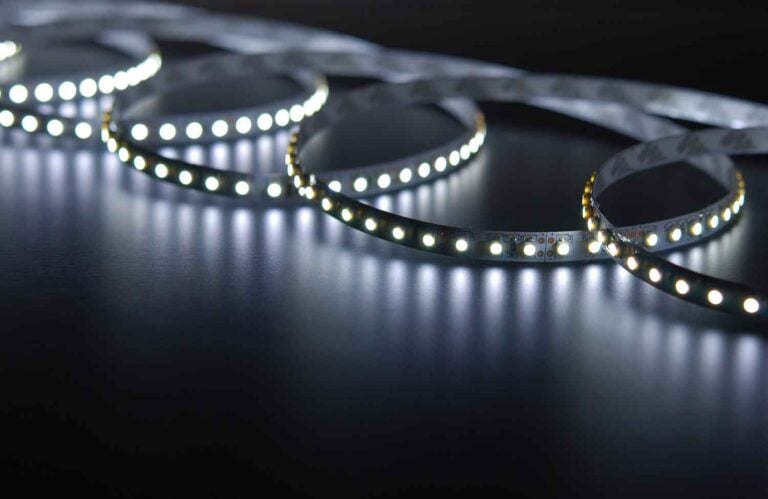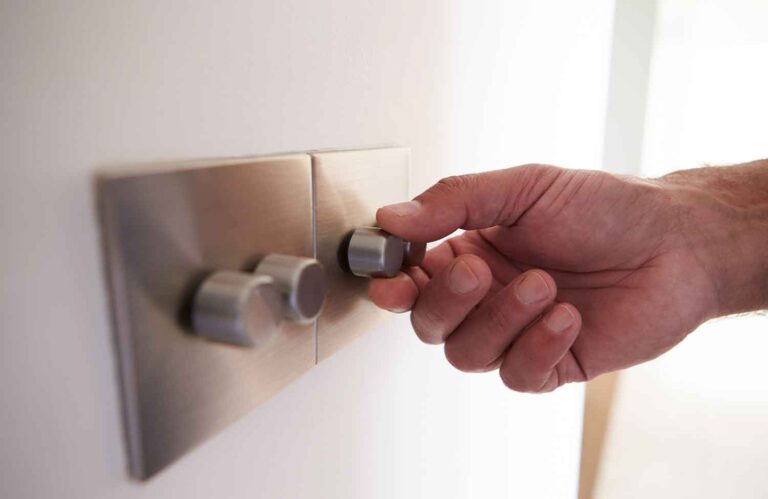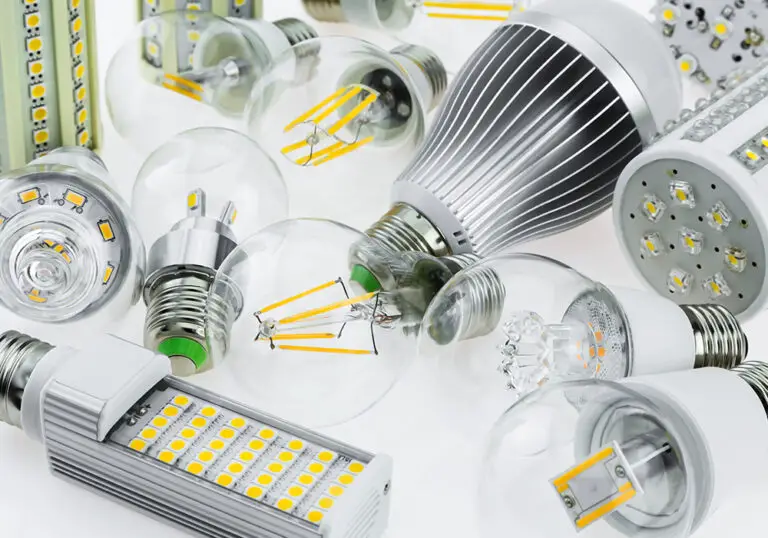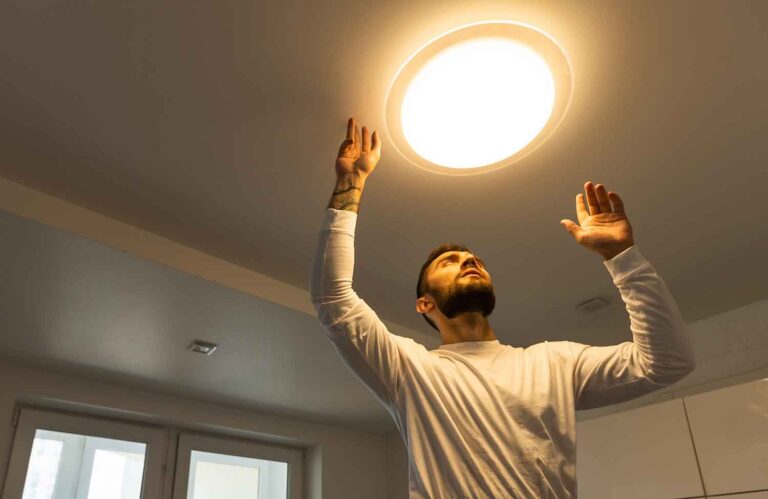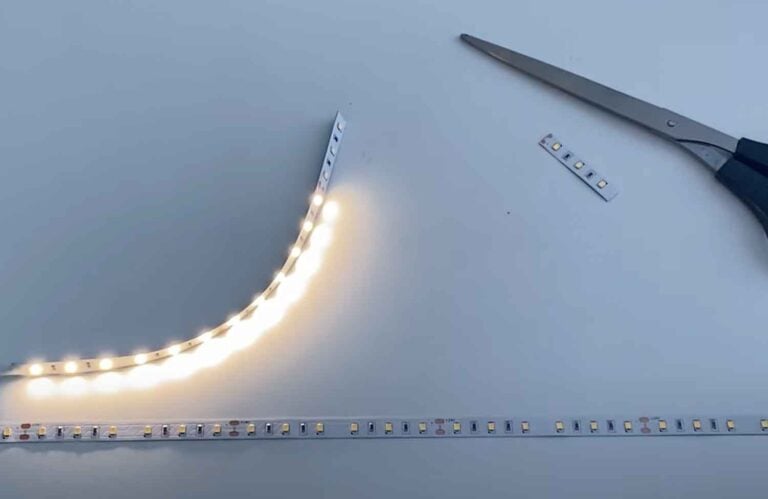Can You Use LED Light Bulbs in Any Fixture?
Compared to traditional bulbs, LED light bulbs are significantly more energy efficient. They’re able to produce a brighter light while drawing much less power consumption than their older counterparts. Because of this, many homeowners consider switching out their older bulbs for the newer superior LED bulbs. This then leads to the question of whether or not you can replace bulbs in an existing feature with new LEDs.
In theory, you can use LED light bulbs in any fixture. LED bulbs will work in any fixture that has the correct wattage and bulb base for the bulbs in question. With that said, some fixtures are better suited to LED bulbs than others. Fixtures designed for incandescent, halogen, or fluorescent bulbs are not designed in the same way as LED fixtures; it’s therefore more likely that the LED bulbs will burn out before their expected lifespan if used in a fixture intended for one of these traditional bulb types. To get the most out of your LED lights, it’s best to use a fixture specifically designed for LED bulbs.
What is a Fixture?
With lighting appliances, the term ‘fixture’ refers to the housing of the lamp or bulb/s in the appliance. Aside from those in your home, lighting fixtures can also be found in commercial buildings like offices, or outdoors in street lamps.
There are many different shapes and sizes of fixtures; some common examples include table lamps, floor lamps, tracked lights, recessed lights, strip lights, and sconces. Despite their differences, all fixtures share some of the same core components. They all contain sockets that hold the bulbs, and wires that connect the fixture and bulbs to a power source. The majority of fixtures also feature some kind of shade or covering that diffuses the light produced by their bulbs.
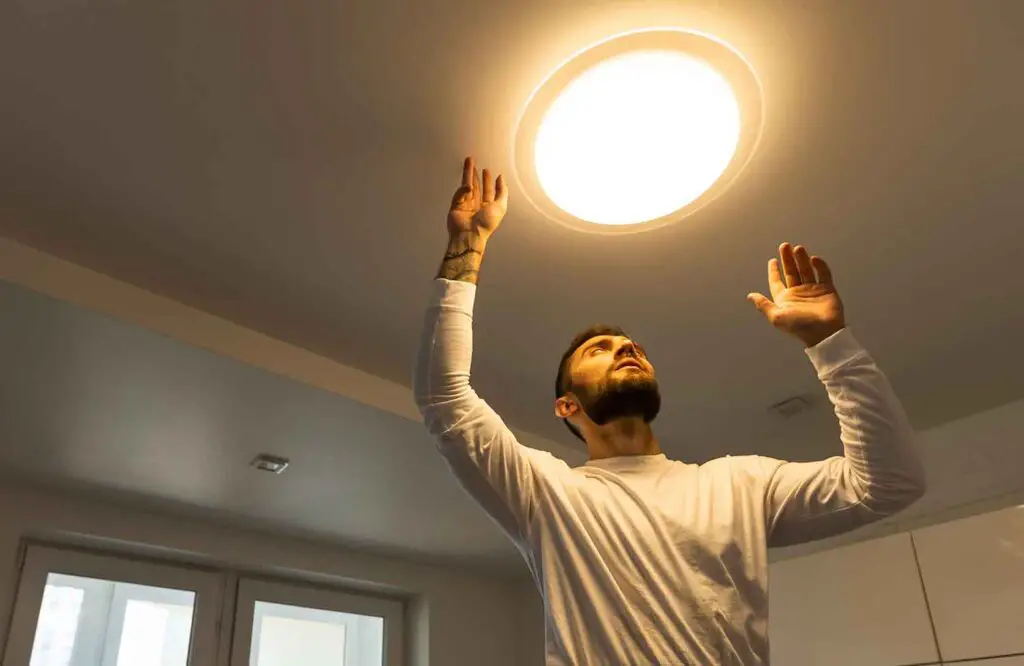
Can You Use LED Light Bulbs in Any Fixture?
Yes, you can use LED light bulbs in any fixture. This is providing that the fixture has both a suitable wattage rating and compatible base for the bulb. As long as it meets these requirements, you can swap out the old bulbs for new LEDs in any existing fixture.
However, it’s generally inadvisable to use LEDs in fixtures intended for traditional bulbs. The concern here is not whether the LED bulbs would work in the fixture, but more to do with how quickly the LEDs will degrade. Fixtures designed for traditional bulbs are more likely to wear out the LEDs before their lifespan
Do You Need a Special Fixture for LED Light Bulbs?
No, you won’t need a special fixture specifically designed for LED light bulbs. To reiterate, any feature that suits the wattage rating and bulb base will be able to accommodate LED bulbs. We explain both of these requirements in more detail below.
Correct Wattage
The first aspect you must consider is the wattage of the fixture in question. Take note that, when replacing old bulbs with LEDs bulbs, the wattage of the LEDs doesn’t necessarily have to match that of the older bulbs. LED bulbs are far more energy efficient than traditional bulbs; they therefore require less wattage to produce the same amount of light.
Instead of judging this aspect by wattage, you should instead look at the bulbs’ light output, or ‘lumens’. For instance, an LED bulb that uses 6 watts can output 400 lumens; to achieve this same brightness, you would need an incandescent bulb rated at 40 watts. It would therefore be possible to replace an incandescent bulb with an LED bulb of a lesser wattage to achieve the same brightness.
Refer to the table below in which we’ve explained the equivalent wattages between different bulb types.
| Brightness (Lumens) | 220+ | 400+ | 700+ | 900+ | 1300+ |
| LED bulbs | 4W | 6W | 10W | 13W | 18W |
| Halogen Bulbs | 18W | 28W | 42W | 53W | 70W |
| Incandescent bulbs | 25W | 40W | 60W | 75W | 100W |
Compatible Bulb Base
The other key aspect to consider is the type of bulb base that the fixture can accommodate. Different bulbs come with different bases; the two most common bases are either the screw type E27s, or the pin type GU10s. If the fixture doesn’t contain the correct bulb base, it will be impossible to place the bulb into the housing. So, ensure that you choose the right bulb base when purchasing your replacement LED bulbs for your old fixture.
What Fixtures Don’t Work with LED Light Bulbs?
There are some lighting fixtures with which LED light bulbs are generally less compatible. These include fixtures with incompatible dimmer switches, enclosed fixtures, and multi-bulb fixtures. Although they may function to some degree, LED bulbs likely won’t perform well in these fixtures compared to others.
Fixtures with Incompatible Dimmer Switches
In order to work properly, dimmable LED bulbs must be connected to an LED-compatible dimmer switch. Older dimmer switches are usually incompatible with LED fixtures due to the way in which they function.
Older dimmer switches operate on an all-or-nothing basis to alter the electric current to the fixture, thus altering its brightness. In other words, older dimmer switches alter the voltage to the fixture across the full spectrum of its output. This means that, on its highest setting, an older dimmer switch can channel too much voltage into an LED bulb. Oppositely, on its lowest setting, the dimmer switch may not provide enough voltage to power the LED bulb at all.
Using the dimmer switch with these incompatibilities will ultimately shorten the lifespan of the LED bulb. The discrepancies in voltage between the power supply and the bulb will prematurely wear out the bulb’s components; this can cause the bulb to dim, flicker, or otherwise deteriorate before its expected lifespan.
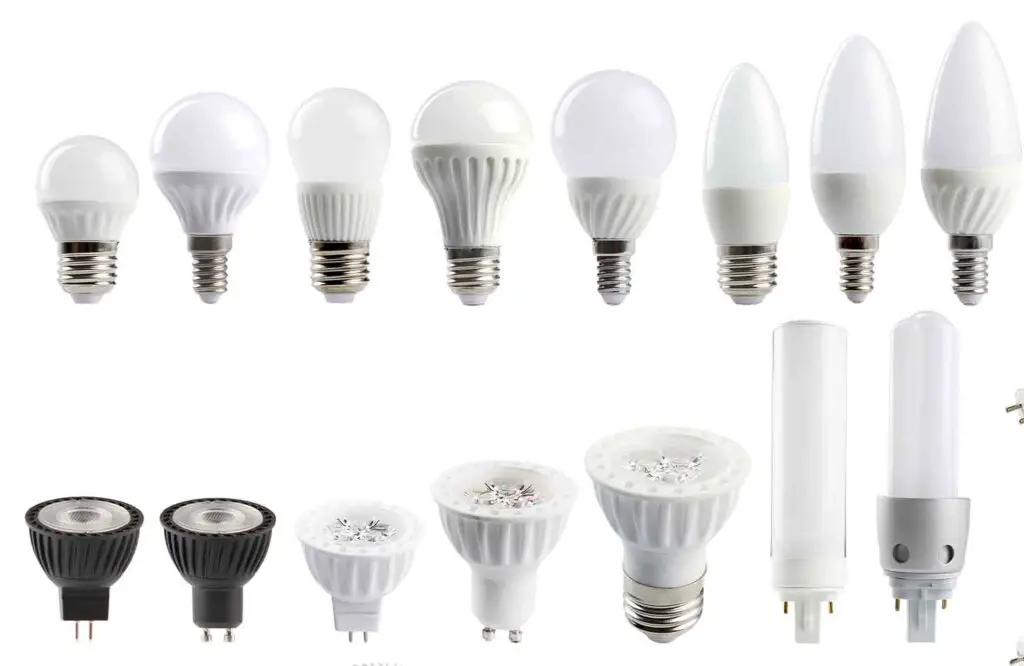
Enclosed Fixtures
LED bulbs are less likely to perform well in enclosed lighting fixtures. This is because enclosed fixtures tend to generate more heat, which is the number one enemy of LED light bulbs.
Compared to traditional bulb types, LED light bulbs give off the least amount of heat during operation. They don’t involve wires or heated filaments like incandescent or halogen bulbs; instead, LED bulbs produce light using light emitting diodes, controlled by a microchip within the bulb. LEDs also contain a heatsink; this is a component that lowers the LED’s overall temperature by distributing the heat evenly around the bulb. Even so, LED lights still generate a small amount of heat due to the electrical current that powers the bulb.
The minimal heat that an LED produces generally isn’t an issue in fixtures with enough ventilation, like ceiling-mounted round lights. However, LEDs in enclosed or recessed fixtures are more prone to overheating due to their limited capacity for heat dissipation. Excessive heat will cause the bulb’s components to degrade more quickly than they should; this leads to issues with the premature dimming of the bulbs, shortening their lifespan.
If you’re unsure on what exactly ‘enclosed fixtures’ refers to, we have given some examples below:
- Semi-flush enclosed lights suspended close to the ceiling, typically found in bathrooms and kitchens.
- Outdoor weather-rated porch lights that have glass coverings to protect them from the weather.
- Lights with retro-style mason jar housing.
- Recessed lights that sit within the ceiling behind a glass front and trimming.
- Track head lights and some table lamps that lack enough space to allow heat to dissipate properly.
Multi-Bulb Fixtures
For similar reasons, LED light bulbs are more likely to deteriorate in multi-bulb lighting fixtures. The more bulbs in a fixture, the hotter the fixture will be. This is especially true for fixtures using traditional bulb types alongside the LEDs.
As we’ve mentioned, traditional bulb types like incandescent and halogen bulbs generate a lot more heat than modern LEDs. Enclosed in a fixture with other, hotter bulbs such as these, LED bulbs are much more susceptible to overheating. Again, the heat will cause the premature degradation of the components within the LED bulbs.
Can You Use LED Light Bulbs in Incandescent and Halogen Fixtures?
Yes, theoretically you can use LED light bulbs in incandescent and halogen fixtures. However, as these fixtures are not specifically designed for LEDs, this may not be the best choice.
Fixtures for incandescent and halogen bulbs are generally less efficient in dissipating their heat versus LED lighting fixtures. Because of this, it’s more likely that the LED bulbs will overheat if used in a traditional fixture; consequently, this would shorten the lifespan of the LEDs. Furthermore, the light output from the fixture may not be as bright if you use LEDs in place of the traditional bulbs. It’s better to use a fixture specifically designed for LED bulbs to ensure the longevity and brightness of your lighting.
Can You Use LED Light Bulbs in Fluorescent Fixtures?
It isn’t advisable to use LED bulbs in fluorescent fixtures. LED bulbs and fluorescent bulbs run on different voltages; fluorescent bulbs require an inverter, whereas LED bulbs instead require direct currents (DC).
Fixtures designed for fluorescent bulbs aren’t able to provide this type of current that the LED bulbs require; so, in a fluorescent fixture, an LED bulb will likely flicker then die relatively quickly.
Can You Mix LED Bulbs with Incandescent Bulbs in the Same Fixture?
Although it is possible to mix LED bulbs with incandescent bulbs in a single fixture, it’s inadvisable to do so. The different bulbs in the fixture will work initially; however, over time, the LED bulbs will deteriorate from the heat generated by the surrounding incandescent bulbs.
The issue with mixing incandescent and LED bulbs lies with the different ways in which these two bulbs produce light. As we’ve now explained, LEDs use light emitting diodes to light up. These components mean that LED bulbs produce little heat during operation; their components are also very sensitive to high temperatures and are not designed to withstand heat. Incandescent bulbs instead produce light using a wire filament that heats up to the point that it glows. This mode of operation means that incandescent bulbs give off a significant amount of heat when the fixture is on.
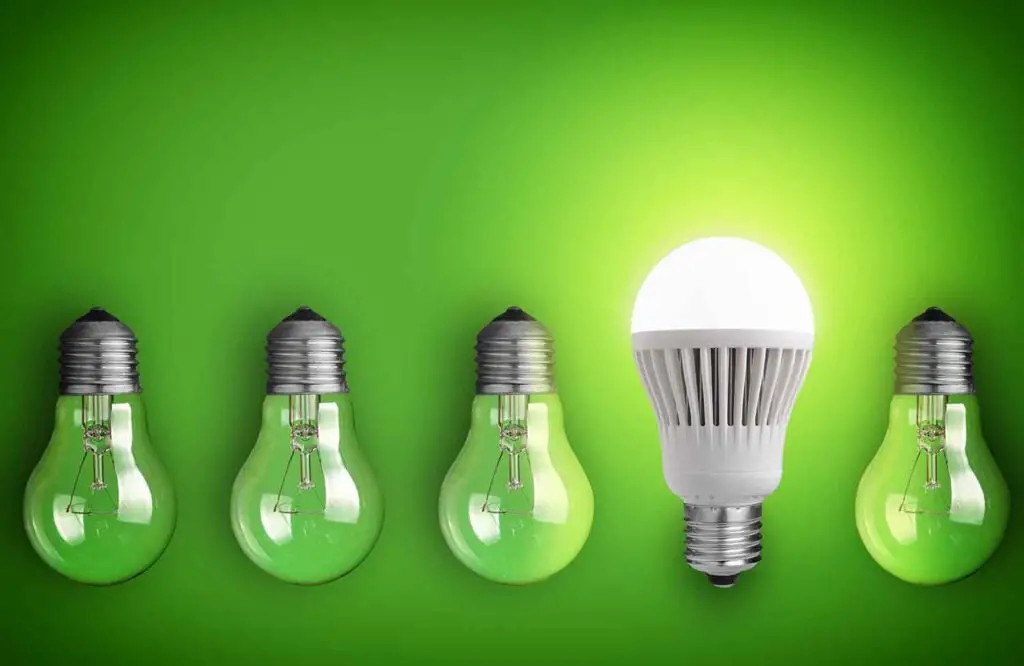
Contained within a single fixture, the heat generated by the incandescent bulbs would also accumulate around the LEDs. This heat will speed up the premature degradation of the LEDs’ sensitive components, including its diodes, semiconductors, microchips, and drivers. Ultimately, this will cause the LED bulbs to die well before their expected lifespan. On top of this, incandescent bulbs draw a lot more power than LEDs to work; they will draw power away from the LEDs, which leads to further problems like flickering and buzzing noises, or the bulbs failing to work at all.
When switching to LED bulbs, people often make the mistake of replacing each bulb in a fixture one-by-one. Instead, it’s a much better idea to replace all the bulbs at the same time; this will prevent the heat produced by the older incandescent bulbs from impacting the new LEDs. An even better option is to replace the entire unit with LED bulbs and a fixture from the same brand; this will ensure that the fixture and bulbs are all rated for the same conditions and intended usage.

